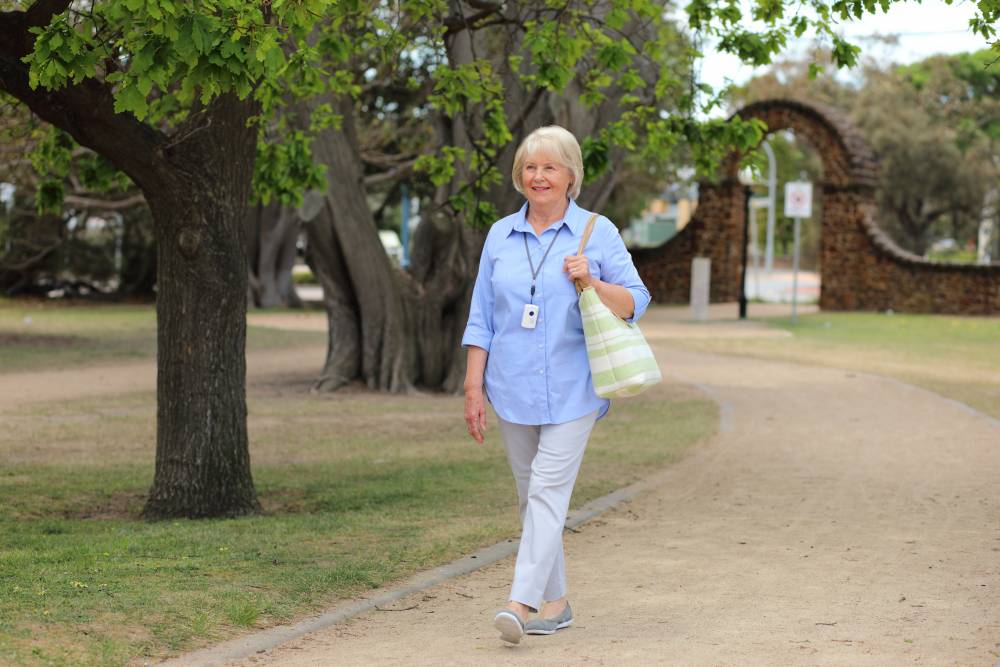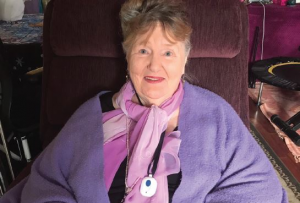
It’s no exaggeration to say a personal alarm can save your life – just ask Leyna, who suffered a fall when she was alone on her property near Geelong.
In 2017, Leyna became unwell. “I was in and out of hospital, I lived alone, and I needed extra support,” she explained.

A friend suggested she get a personal alarm. After doing some research, Leyna decided to go ahead with the purchase of a personal alarm to help her keep living independently at home on her own.
Time went by, and it wasn’t until April 2019, that Leyna found herself needing to use the emergency button on her alarm.
Busy in her laundry one day waiting for her washing to finish, Leyna decided to enjoy the sun shining through the window. So she sat down on the stool, and instantly felt relaxed. The next moment she woke to find she had fallen and hit her face on the ground.
“I woke up in shock. My head, arms and body ached from the impact with the floor,” she said.
Falls are the main cause of unintentional injury and hospitalisation among Australians over the age of 65. it is estimated that at least 45,000 hospitalisations a year are due to falls in this age group.
Falls can lead to a cascade of problems, including functional decline, frailty, decreased quality of life as well as anxiety, loss of confidence and independence, which is where a personal alarm can really help.
Falls are the most common reason users activate their personal alarm, followed by users feeling unwell, and shortness of breath. If a client can call and receive help after a fall or when feeling unwell, they have a much better chance of a quick recovery and preserving their independence.
Research by Monash University found “the overwhelming majority” of personal alarm wearers were “very positive” about wearing a personal alarm.
When Leyna fell, she pressed the button on the personal alarm, which she wore around her neck. “The response monitor answered immediately,” she said.
“I was so grateful and relieved.”
It took an ambulance 10 minutes to arrive, and the operator called Leyna’s emergency contact, who arrived shortly after the ambulance.
Leyna was taken to hospital and stayed in overnight. She’s now back at home recovering.
“I want to stay living at home and like to be independent, and the personal alarm allows me to do that,” Leyna said.
“The response staff are brilliant. I appreciate everything they do, and can’t speak more highly of them. My friends and family are also so thankful,” she said.
For the 1,500 calls we receive a day, MePACS’ average response time is less than 2 minutes – and 94 per cent of calls are actually responded to within 1 minute.
In addition to responding to emergency calls, we carry out 22,150 pendant test calls every month, and makes 435 wellbeing calls a day.
The most important features of our personal alarms are:
Leyna has the final word on personal alarms.
“If I do need support at any time I know MePACS are there for me anytime, day or night. They’re just wonderful. Without my alarm, I don’t know what I would’ve done. It saved my life.”
For more information on MePACS personal alarms visit www.mepacs.com.au or call 1800 685 329.